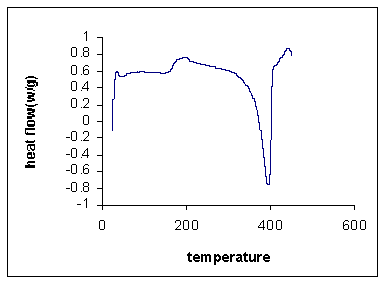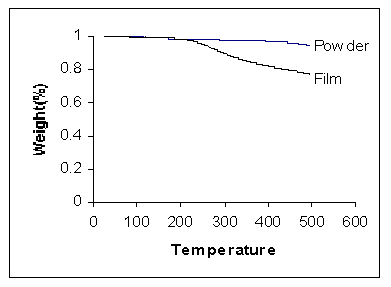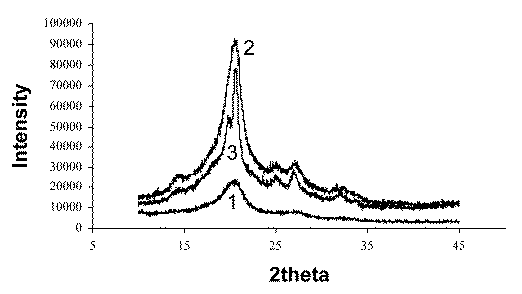
Processing of Conducting Polymers
Electrically conducting organic polymers are required to generate the electric fields for Chameleon Materials. Stable, homogeneous fields can only be achieved from high quality, homogeneous polymers. Unfortunately, the development of processing technology in this field has lagged far behind the exploratory synthesis. Polyaniline is one of several candidates being explored as electrode materials. Solution processing of PANI is well established, but the possibility of thermal processing has yet to be fully explored. Here we offer new insights into the thermal behavior of PANI films and powders.
The Leucoemeraldine base (LEB) form of polyaniline is the fully reduced form. In order to become conducting, the polymer must be partially oxidized and protonated. The LEB form is somewhat oxygen sensitive, particularly at higher temperatures, so these studies were performed either under nitrogen or vacuum. Powders of LEB were prepared by deprotonation and reduction of the as grown salt. The material shows a Tg of 170-200 °C and a strong endotherm at 365-395 °C.

As can be seen from the TGA, this event is not associated with a mass loss. We attribute this previously unnoticed transition to melting (see SEM micrographs). Heating the sample below the melting transition results in a dramatic increase in the crystallinity of the powder as evidenced by X-ray diffraction (below). The conductivity of the sample is not adversely affected by the annealing process and the LEB can be converted to its conducting form either before or after heat treatment.

